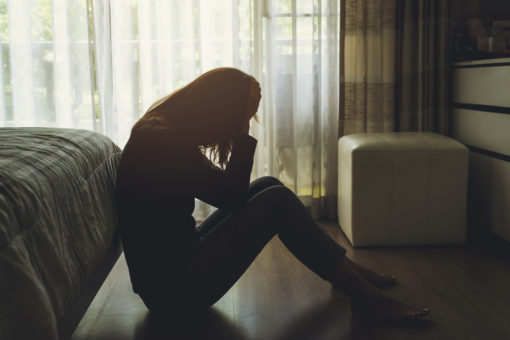Anxiety is the body’s natural response to stress and can manifest in many ways, including fear, uneasiness, or a “pit at the bottom of your stomach.” Many individuals experience anxiety about starting a new school, buying a home, dealing with the aftermath of a breakup or divorce, or going to the dentist. Although it is reasonable to feel anxious during new or stressful situations, anxiety becomes a disorder when these anxious feelings begin to interfere with everyday life. When an individual experiences fear and physical symptoms of anxiety most hours of the day, and when these symptoms become debilitating, it is no longer normal anxiety but can be, instead, a mental health disorder.
Normal anxiety vs. anxiety disorders
Normal anxiety can be motivating for one to accomplish their goals or escape a dangerous situation, but an anxiety disorder disrupts an individual’s everyday life. The following are the significant differences between normal anxiety and anxiety disorders:
- Stressors: Normal anxiety usually occurs in the presence of a stressor such as an exam in school, a challenging work project, a divorce, or a big move. Anxiety disorders do not necessarily have a stressor and can occur for no concrete reason. Little tasks such as paying bills, going out in public, or completing a job application can be crippling for individuals with an anxiety disorder.
- Time and duration: Normal anxiety is fleeting. It lasts until the stressor is removed. If an individual has anxiety about a job interview, their anxiety will dissipate once the job interview is completed. However, individuals with an anxiety disorder will experience signs and symptoms of anxiety for the majority of the day. These signs and symptoms are disproportionate to the stressor (if one is present), and they may last for weeks or months.
- Impairment: Individuals who have normal anxiety will be able to complete their daily tasks and accomplish their goals despite their anxious feelings. However, individuals who have an anxiety disorder will be hindered by their disorder. They may not be able to get out of bed in the morning or may call in sick to work or school. Anxiety disorders impair daily tasks and can make day-to-day living extremely challenging.
Types of anxiety disorders
Anxiety is the most common mental health disorder and are composed of several specific disorders that are all characterized by excessive fear. The following are specific anxiety disorders that are recognized by the American Psychiatric Association and The Diagnostic and Statistical Manual of Mental Disorders, Fifth Edition (DSM-5),
- Separation anxiety disorder
- Selective mutism
- Specific phobia
- Social anxiety disorder (social phobia)
- Panic disorder
- Agoraphobia
- Generalized anxiety disorder
- Substance/medication-induced anxiety disorder
- Anxiety disorder due to another medical condition
Of note, obsessive-compulsive disorder (OCD), acute stress disorder, and posttraumatic stress disorder (PTSD) are no longer considered anxiety disorders as they were in the previous version of the DSM.
Signs and symptoms of anxiety disorders
Signs and symptoms of anxiety generally differ with each individual and with each specific disorder, the most common signs and symptoms that are associated with anxiety include the following:
- Increased heart rate
- Rapid breathing
- Trouble concentrating
- Difficulty sleeping
- Restlessness
- Irritability
- Muscle tension
- Headaches
- Chest pain
Although anxiety can be normal, it can also be a mental health disorder. If you are struggling, and you find that it is interfering with your daily life, and affecting your relationships, you may have an anxiety disorder. Anxiety disorders are best treated with psychotherapy, and some individuals may need medication. The goal of psychotherapy is to address the anxiety, try to determine the underlying trigger, and develop coping mechanisms to control symptoms and any future stressors.
Kristen Fuller, M.D., is a clinical content writer and enjoys writing about evidence-based topics in the cutting-edge world of mental health and addiction medicine. She is a family medicine physician and author, who also teaches and contributes to medicine board education. Her passion lies within educating the public on preventable diseases including mental health disorders and the stigma associated with them. She is also an outdoor activist and spends most of her free time empowering other women to get outside into the backcountry.
